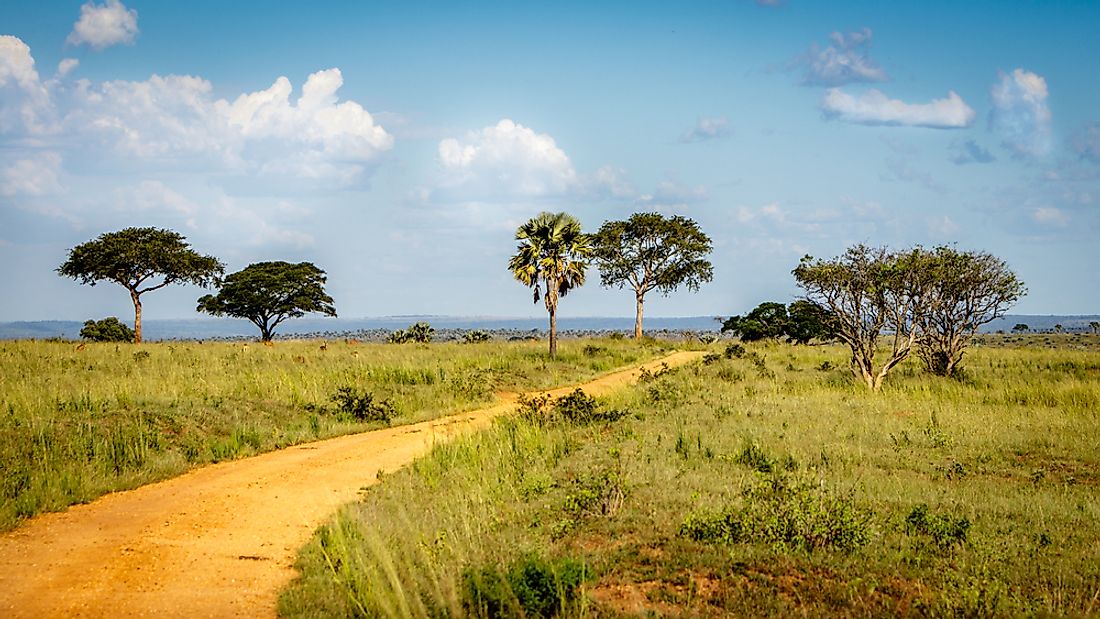What Type Of Climate Does Uganda Have?

Uganda is an East African landlocked country with its capital city in Kampala. The country is bordered by Kenya, South Sudan, Tanzania, and Democratic Republic of Congo (DRC), and Rwanda. It covers a land area of about 236,000 square kilometers. Lake Victoria, which also extends to Kenya and Tanzania, is the largest freshwater lake in the country. However, Lake Kyoga and Lake Albert are also large sources of water. The Ugandan population is approximately 44 million. The official languages spoken are English and Kiswahili. The native also speaks Luganda, Runyoro, Luo, Lusoga, and Runyankole. Uganda has a warm tropical climate.
The Climate Of Uganda
The climate of Uganda is largely influenced by the altitude which ranges from about 1000- 1400 meters and the Inter-Tropical Convergence Zone. Uganda depends on different kinds of winds that affect its weather patterns. The rain-bearing winds blow from the Atlantic Ocean to the western parts of the country as well as from the Indian Ocean to the eastern parts of Uganda. On the other hand, dry winds come from northeast Uganda and southeast Uganda. Generally, the average annual temperatures range from 24˚C to 31 ˚C. The annual precipitation amounts to between 900 mm and 1600 mm. The moderate temperatures, as well as adequate rains, result in Uganda being generally warm with very minimal temperature variations.
The Climate In Northern Uganda
In the northern parts of Uganda, the climate is hot and dry. This is occasioned by dry winds emanating from the dry northeastern borders of Uganda composed of Kenya, South Sudan, and Eritrea. The dry season covers December to March in which temperatures rise to 32˚C. During this time, there is less rainfall measuring about 40 mm in December and February. The rain received may go as low as 10 mm in January. Sunshine is common during the dry season shining for 6-9 hours every day. However, during the short rainy seasons, the intensity and duration of sunshine reduce tremendously. The rainy season runs from April to October. It is caused by moist winds that originate from the DRC. The amount of precipitation received rises from 40 mm in the dry season to 170-220 mm in the rainy season. Temperatures drop to as low as 26-27 ˚C at this time. The northwestern parts of Uganda which is around Lake Albert and Albert Nile River, temperatures are quite high being between 33˚C and 40˚C. The highest temperatures are experienced in the months of December to March which also receives minimal amounts of rainfall. On the contrary, the altitude drops to below 600-1000 meters below the sea level.
The central south of Uganda around the equator experiences a tropical savanna climate. The temperatures are stable with a diurnal range of 27 ˚C to 29 ˚C throughout the year. However, they may drop to as low as 17-18˚C especially in the night. Large water bodies around this region include Lake George, Lake Edward, and Lake Victoria. They influence the climate of the region. The high rate of evaporation and evapotranspiration from the rich and thick equatorial forests during the day increases humidity in the atmosphere. There are two rainy seasons in Uganda. The long rains take place from March to May usually all night to dawn and short rains come in September to December.
The Climate In Southern Uganda
In Uganda, rainfall increases with an increase in height above sea level. Unlike the other parts of Uganda that experience a tropical climate, the southern parts have an equatorial climate. The atmosphere has high moisture content, and rains fall throughout the year and this increases with altitude. The southern Uganda climate is influenced by Lake Victoria, Mt. Ruwenzori, Mt. Virunga, Mt. Muhabura, Mt. Kigezi, and Mt. Elgon. These mountains exhibit very high altitudes with cloud cover and snow at their peaks. The south experiences cool temperatures throughout the year. The high amounts of rainfall and cool temperatures have resulted in the growth of forests along the slopes of the mountains. Rainfall is highest from April to November. However, on the adjacent lowlands and leeward side of these mountains such as around Lake Edward, the winds are dry leading to low precipitation.
Therefore, Uganda experiences both an equatorial and warm tropical climate.











